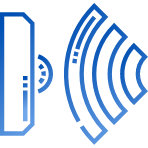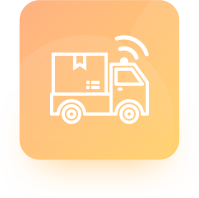Industry 4.0 – A Deep Analysis of Use cases and Technologies

“If you think the Internet has changed your life, think again. The Internet Of Things is above to change it all over again!”
As aptly quoted by one of the co-founders of Aria Systems, IoT is undoubtedly the game changer, where billions of devices are interconnected to create a positive impact across any industry. By 2025, IDC predicted that above 95% of the internet of things uses cases will be successfully implemented with real-time applications. With infinite opportunities that are in line with the evolution of Industry 4.0, let us briefly understand what is Industry 4.0 and what’s the buzz all about.
From Machine Learning to Augmented Reality, smart wearables to smart home appliances the Internet of Things is a way to go in the future where multiple devices are interconnected to save time for the end-users. Industry 4.0, is the successor of the third revolution of the adoption of computers and automation.
In simple terms, Industry 4.0 is the enhancement of the smart and autonomous systems which is driven by the data and machine learning. As the Industry 4.0 unfolds, it gradually increases the machine to machine interactions by reducing human involvement wherever possible.
Table of Contents
Technologies used in IIOT
IoT has already created a trendsetter in the home and consumer-facing gadgets like Echo and Google Home where IoT has started its influence on several industries like Manufacturing, Agriculture, Mining, Oil. According to the IoT Advisory Group, by 2020 it is estimated that Industrial IoT may reach $3 trillion.
Here are some of the niche technologies which take the Industrial IoT to the whole new level. With the evolution of IIoT, IoT is not about just connecting the devices through the internet which help individual users but it has evolved way beyond that. Effective collaboration and intercommunication are made possible between people, machines and industries, send the data to the cloud which in turn send commands to the devices based on the inputs.
Sensors:
Undoubtedly, Sensors and Internet of Things are interdependent. Just like we humans use our five sense organs to perceive the world, Sensors used in IoT is a device that detects and responds according to the physical movement from the environment. However, there are several types of sensors. We can quickly walk through some of the types and its benefits.
Smoke Sensors
Smoke sensors are one of the most commonly used in every household as well as in commercial buildings. It automatically detects any abnormal gas, flame or any kind of smoke within a certain radius and triggers an alarm
Temperature Sensors
There are several uses cases where ‘Temperature Monitoring’ is the crucial factor for some industries like Pharmaceuticals, FMCG, Biotechnology etc. Temperature sensors are widely used in these IIoT industries.
Image Sensors
These sensors are useful in industries like healthcare where image sensors help to monitor the blood pressure and in the transportation sector these sensors will facilitate the prevention of the vehicle collision to a great level.
Optical Sensors
The effective way to detect any type of electromagnetic radiation through the light, magnetic field or electricity is through these optical sensors.
Proximity Sensors
The proximity or the distance between the two objects is detected through these sensors. For instance, it is used to avoid any collision of cramped traffic or deals about the specific product when they walk near it.
IR Sensors
These Infrared sensors are used to detect any human presence and detect any infrared radiation. Among its various use cases, the Infrared sensors have the ability to detect any early environmental disaster.
Standards:
In order to increase interoperability of the aggregated data sets there are certain technical standards that help to process the system data efficiently.
Weave – Google developed this communication layer to create an intelligent user experience across the web or mobile devices. It provides standardized schemas that describe the device interoperability.
AllJoyn – This establishes effective communication between devices where it facilitates the interoperability between connected products and software. For e.g, a motion sensor turns off a light when no one is present in a room.
Nest – Another brainchild from Google is the Nest, which is basically developed to create a smart home. The nest has an inbuilt Linux operating system which has several products like Thermostat, Protect, Smoke Detectors, smart doorbells to name a few.
OPEN IoT – It is an open source middleware which retrieves the data from the sensor cloud. OPEN IoT helps to create innovative solutions like developing a Smart city through smart campus, crowd-sensing monitoring and so on.
Thread – Thread is specifically built for IoT where it enables the device to device communication and device to cloud communication seamlessly. This networking protocol is designed to support various products like safety products, security products, climate control products, Energy management products and so on.
Home Kit – Through the HomeKit framework, the users can communicate with the connected devices and control them using an app. For instance, in Apple using HomeKit technology, it can group the actions together and trigger action through Siri App.
Analytics and BI:
The analytical or the Business Intelligence Tool helps to predict and analyze the data based on the current as well as historical data and create a detailed report.
These data will be helpful for the SME and the end-users to gain knowledge about the current trends with best-in-class analytics, visual representation. The simple dashboard allows the end-users to extract the data, analyze it and export in a spreadsheet or desired format for further studying the end-report.
Among the several tools that are available in the market today, IBM’s Cognos BI tool, Tableau tool are popular among the other available tools which are used to predict the current trend and develop a forecast report for future reference.
Machine-to-Machine:
Machine to machine is generally referred to as stand-alone network equipment which facilitates point-point communication between the sensors, machines or hardware over a wired or wireless network. When combined with the IoT system, these M2M technology moves towards the next level into one large, ecosystem.
For e.g., a normal coffee vending machine will deliver the beverage upon receiving a coin or currency note and refill when it is empty. But when IoT is implemented with this M2M technology, it goes one step further by analyzing the user behaviour, patterns and based on the user activity, it intelligently senses when the machine will be out of stock and sends information that it is time for a refill before it is empty.
IoT use cases for Industry 4.0
Some of the leading business use cases that provide a tangible business solution are as follows,
Predictive Maintenance
As the name indicates predictive maintenance anticipates a possible failure even before it arises. This can be achieved only if we have a thorough knowledge of the product, where adequate data is collected with a rule-based proper alert system.
Next, understanding user behaviour and their complex patterns are crucial through machine-learning algorithms.
Hence, implementing predictive maintenance in place will reduce the maintenance costs and increase asset availability as well as the overall revenue.
Digital Twin
The new age of the Manufacturing is already impacted through these Digital Twin Technology. Digital Twins which in simple terms refer to the digital representation of the physical objects which provides a powerful way to control and monitor the assets.
However, the complexity of the Digital Twin implementation varies from each use case. For example, a simple Digital Twin application can be a water sensor and a complex use-case can be a power plant or vehicle implementation.
Asset Tracking
The main idea behind Asset tracking is to quickly locate and monitor the key assets. For instance, an IoT implemented Windmill will easily predict the wind direction, its speed and temperature, this data guides the individual mills to work in a particular direction that increases the power generation.
Thus Asset tracking leverages the logistics, detects any inefficiencies and maintains the inventory levels.
Fleet Management
The transportation industry is one of the world’s highest revenue yielding industry, which accounts for around $700 billion worldwide. With the right IoT tools in place, through effective AI and Machine Learning algorithms, this transportation or the truck industry can save more. This can be achieved through optimizing the route which saves fuel, avoiding accidents or danger zones ahead, which saves repair/ maintenance cost and improves the operational insights.
Supply Chain
To track the inventory like the material availability can be checked by implementing IoT enabled sensors across a supply chain. Monitoring supply chain gives real-time information on the products, equipment and other information.
By using this data, the manufacturing companies can easily recognize the interdependencies, predicts any possible defects, track manufacturing cycle and so much more. Thus, it overall decreases the inventory, thereby decreasing the expected expenditures to a great extent.
Conclusion
The Industry 4.0 use-cases provided in this article are just the tip of the iceberg. The Industrial IoT has N number of possibilities which has a vast usage across any industry.
The right technology implemented at the right time like the Artificial Intelligence, complex machine learning algorithms, Big Data helps from predictive maintenance to the fleet management that transforms the industries into a connected smart industry and increases the productivity effectively.












